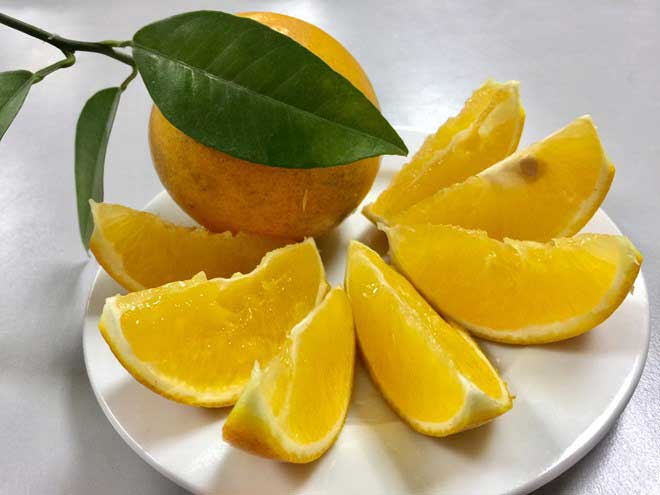


National flag carrier Vietnam Airlines will serve Cao Phong orange, a speciality fruit of northern Hoa Binh province, as a dessert in business class from December 8 – 22.

Cao Phong orange, a speciality fruit of northern Hoa Binh
province. (Photo: VNA)
Cao Phong orange will be available on nearly 70 domestic and
international routes, including those between Hanoi and Ho Chi Minh City and
those connecting the two cities with destinations in Asia, Europe and
Australia.
The move is part of the airline’s project "Bon mua trai cay – Bon mua yeu
thuong” (Four seasons of fruit – Four seasons of love), aiming to promote
seasonal farming specialties and traditional products.
Cao Phong orange is the third specialty fruit served on its flights, after Luc
Ngan litchi and Hung Yen longan.
The oranges will be selected after a strict monitoring and quarantine process.
The fruit is grown on vast fertilised basaltic soil hills in Hoa Binh by farms
which apply Vietnamese Good Agricultural Practice (VietGAP).
In-flight meals leave one of the first cultural impressions on foreign
visitors, according to the carrier’s Executive Vice President Le Hong Ha.
Passengers flying with Vietnam Airlines can now enjoy Vietnam’s most famous
specialties as a greeting from the country, he noted.
Serving local farm produce is how Vietnam Airlines promotes the national
identity among domestic flyers and international friends, Ha added.
Vietnam Airlines was named the World's Leading Cultural
Airline and World's Leading Airline - Premium Economy Class at
this year’s prestigious World Travel Awards gala ceremony, held
in Lisbon, Portugal in December.
Earlier this year, Vietnam Airlines was certified with a four-star airline
rating by international air transport rating organisation Skytrax for the third
consecutive year. Its Premium Economy class, available on both Boeing 787-9
Dreamliner and Airbus A350 on several international routes, offering generous
legroom as well as spacious reclining seats for passengers’ comfort.
The airline has further enhanced inflight dining experience by appointing Luke
Nguyen as its Global Cuisine Ambassador. Nguyen recreated the in-flight menus
to present authentic Vietnamese flavours from different parts of the country in
harmony with on-board dishes.
Source: VNA